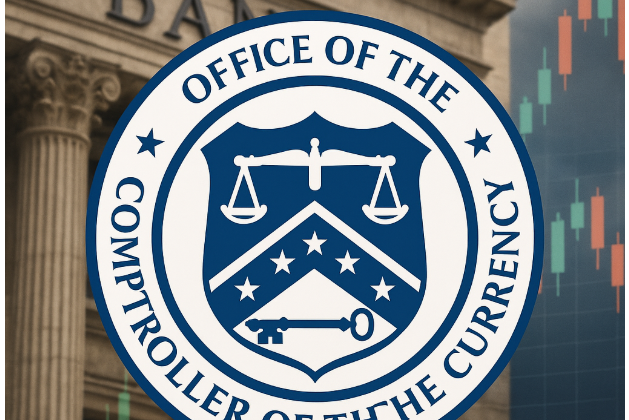
The U.S. Office of the Comptroller of the Currency (OCC) released a new interpretive letter confirming that national banks may legally provide crypto custody, node operation, and stable-coin services.
This marks a major regulatory shift, coinciding with a Department of Justice move away from aggressive enforcement-led crypto actions and toward more structured oversight.
The decision brings long-awaited clarity for financial institutions seeking to engage with digital assets.
Background Context
For years, U.S. crypto regulation has been fragmented, with conflicting interpretations from the SEC, CFTC, OCC, and DOJ.
Meanwhile, global jurisdictions (including the EU’s MiCA framework) have moved faster to define digital-asset rules.
The new OCC guidance represents a turning point, signaling that U.S. regulators are prepared to integrate digital assets into the mainstream banking system.

Why This News Matters
This regulatory milestone has profound implications:
- Institutional adoption accelerates: Banks gaining legal clarity can massively increase liquidity and validation for the crypto sector.
- Market infrastructure upgrade: Custody, tokenization, settlement, and banking rails may become standardized under federal supervision.
- Reduced regulatory uncertainty: Investors and businesses can operate with clearer rules of engagement, improving market stability.
- Cross-market effects: Crypto market behavior often influences equities, FX risk sentiment, and even commodities.
- New product innovation: CFDs, tokenized assets, and stable-coin-based settlement solutions may expand rapidly.
Our Expert Take
This policy shift is likely the beginning of a three-stage transformation:
- Regulatory clarity phase — establishing the legal groundwork for institutions.
- Capital-inflow phase — large asset managers, banks, and corporations entering the crypto ecosystem.
- Market-integration phase — digital assets becoming embedded across payment, trading, and settlement systems.
However, risks remain. Token-classification battles will continue, and regulators may still tighten oversight.
For traders, the key is monitoring institutional adoption metrics, bank approvals, and how crypto correlations evolve against equities and FX.
For the industry, the change marks a critical step toward legitimacy—one that could reshape digital-asset markets into 2026 and beyond.





